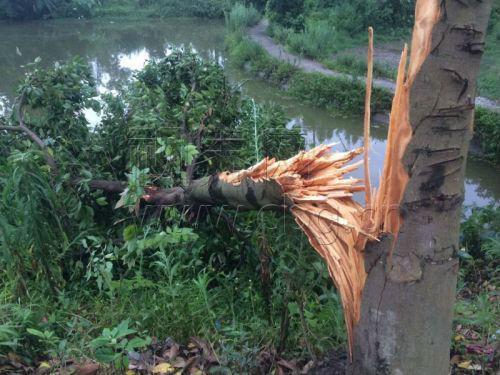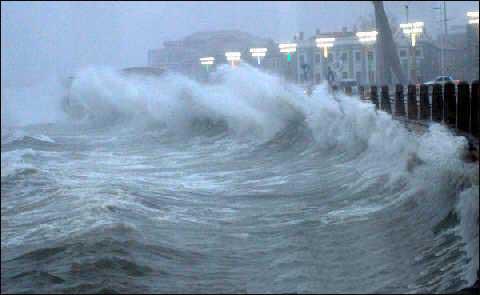In 2006, The Origin of the Noun Typhoon and Its Naming Principle discussed the historical evolution of the term "typhoon". According to the author, in ancient times, people called typhoon as hurricane, and it was not until the late Ming and early Qing dynasties that people began to use the name of wind racing. In 1956, when the name of wind racing was reduced to “typhoon”, while a hurricane started meaning a cold wave or a non-typhoon wind.
There are two versions of the origin of typhoons. The first
one is "transliteration theory", which includes three origins:
“da feng(gales)” in Cantonese, “feng shai” in fujian dialect
and “Typhon”, the name of a character in the Greek epic
History of Theocracy during the Dutch occupation of Taiwan. The
second one is "origin theory", that is, people name a typhoon
according to its origin.
A mature typhoon, according to its structure and the weather brought, is divided into three parts, namely the eye of the typhoon, wind and rain region of the vortex, and the outer wind region. The eye is located in the center of the typhoon, with a diameter of about 5,000 to 10,000 meters. China is the world’s few countries who affected most by tropical cyclones, seven typhoons make landfall in China every year averagely. The economic loss caused by the typhoon alone amounted to 24.6 billion yuan. The rainstorm and storm caused by the typhoon made great damage to the coastal areas of eastern China.
Typhoon is a destructive weather system with strong destructive power, and its harmfulness mainly has three aspects:
One is the risk of high winds. The maximum wind force near the typhoon center is above level 8, which can cause severe damage.

The second is rainstorm disaster. Typhoons are one of the most powerful rainstorm systems. In areas where typhoons have passed, they usually produce rain of 150mm~300mm, and a few typhoons can produce heavy rainstorms more than 1,000 millimeters. In 1975, the third typhoon in the upper reaches of the Huaihe River caused heavy rain, which created the extreme rainstorm in mainland China and formed the "75.8" flood in Henan.

The third is storm surge disaster. A general typhoon can add water to the coastal waters, and the most powerful water on the coast of Jiangsu can reach up to 3 meters. The "9608" and "9711" typhoon added water, making coastal areas of Jiangsu along the Yangtze River reach the highest tide in history.

When typhoon passes through, it often brings severe storm and heavy weather, which causes the sea surface waves and serious threat to navigation safety. The storm surge caused by the typhoon may destroy crops, construction facilities and so on, causing great loss of people's lives and property.
Comment list ( 0 )
